Chavin De Huantar 900200 Bce Ap Arts Allto Qapu Tunic Ap Arts
Chavín 🇵🇪
Architecture
Because of the mountainous terrain of Chavín ⛰️, which was located in the Andes, many of its compages was built in elevated areas. It is common for buildings from this civilization to be built around a u-shaped plan with a plaza (meeting space) in the center and face a large, open part of nature, just information technology isn't known whether this was for aesthetic purposes or not 🤷 Most buildings are also aligned with either cardinal directions or a nearby river, which shows the importance of h2o to the people that once lived in Chavín. The region's ideal location in an Andean valley, rather than on a mount summit, and nigh both the Huachecsa and Mosna Rivers, allowed for easy travel for its people and outsiders 🚶
Pictured beneath is Chavín de Huántar, which acted as the capital of Chavín's religious cult and is at present located in nowadays-day Peru.
Can you find some mutual characteristics of Chavín architecture in this work?
Epitome Courtesy of Wikipedia (CC Past-SA 3.0). Chavín de Huántar
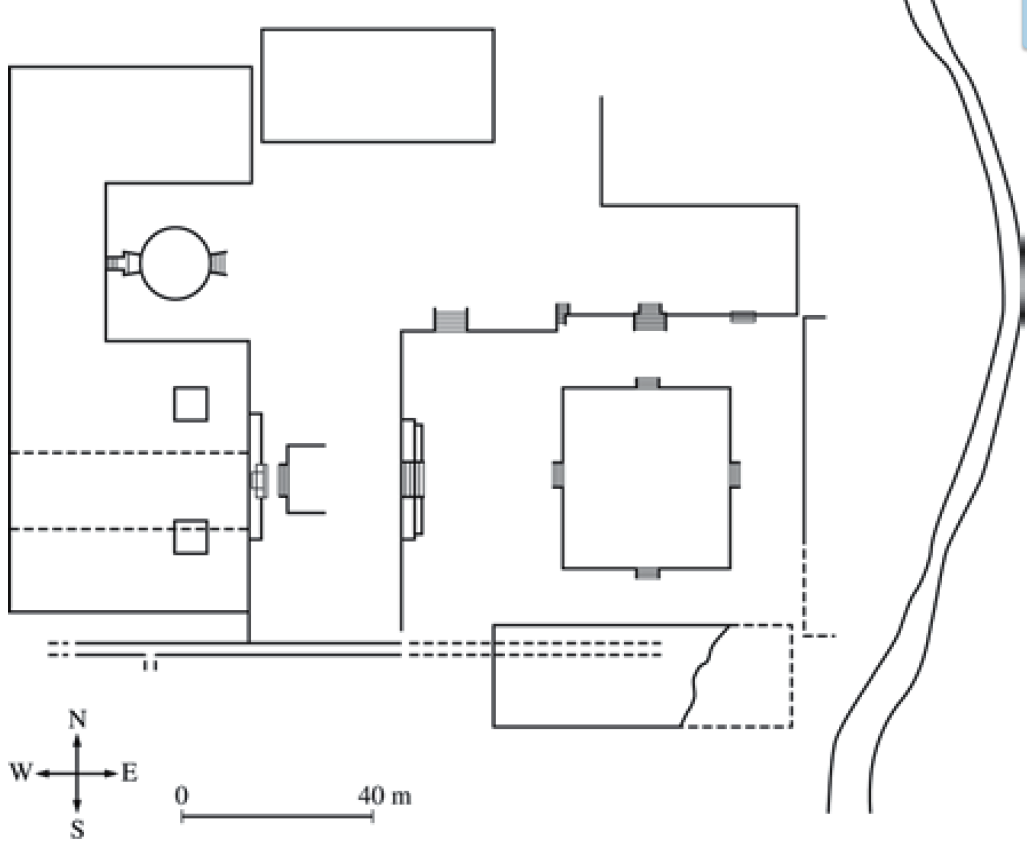
Image Courtesy of Pinterest. Plan of Chavín de Huántar
Sculpture
The majority of Chavín sculptures combined both human and animate being forms or were zoomorphic (animal-like 🐍) in appearance but worn by humans, equally you tin can come across in the works below. This is like to many works from unit 1, where artists combined both animal and human motifs (features or designs) to emphasize their relationship with one another and importance in each other's lives ( ⬅️ skilful example of a cantankerous-unit and cross-geographical connection). Well-nigh sculptures from Chavín also take left-right symmetry.
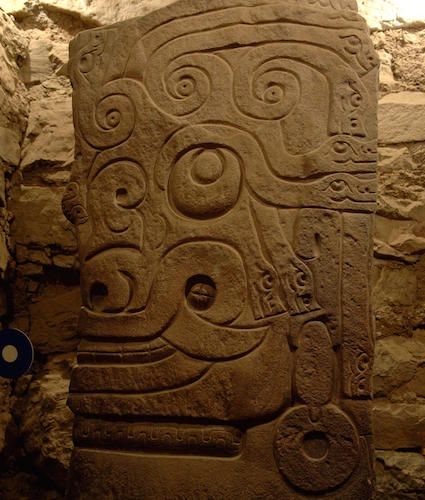
Resources:
Image Courtesy of Khan Academy. Lanzón Stone (1 side of the carving)
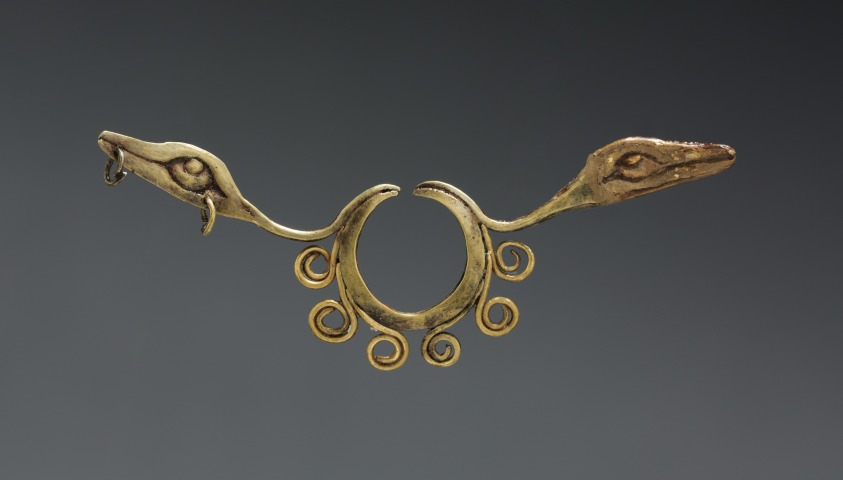
Image Courtesy of the Cleveland Museum of Art. Nose ornament
Describe the relationship between animals and humans in both of these works. (Don't look anything up; just use your art historian skills to find visual clues.)
Mayan 🇲🇽 🇧🇿 🇭🇳 🇸🇻 🇬🇹
Architecture
The Mayans were well-known for constructing pyramids and temples, which were unremarkably congenital near 1 another in plazas like the one nosotros saw in Chavín or on height of i another. These buildings were built using the corbelled vaulting technique, which means that curvation-like structures were placed in a space like an entryway to back up the roof. They were specially of import in the construction of Mayan buildings because many of them have roof combs (a structure placed on height of a temple-pyramid), which gave them both added tiptop 📏 and weight 🏋️ Although they made the construction process more hard 🤯, roof combs were important to Mayan architects considering they accentuated the verticality of their buildings.
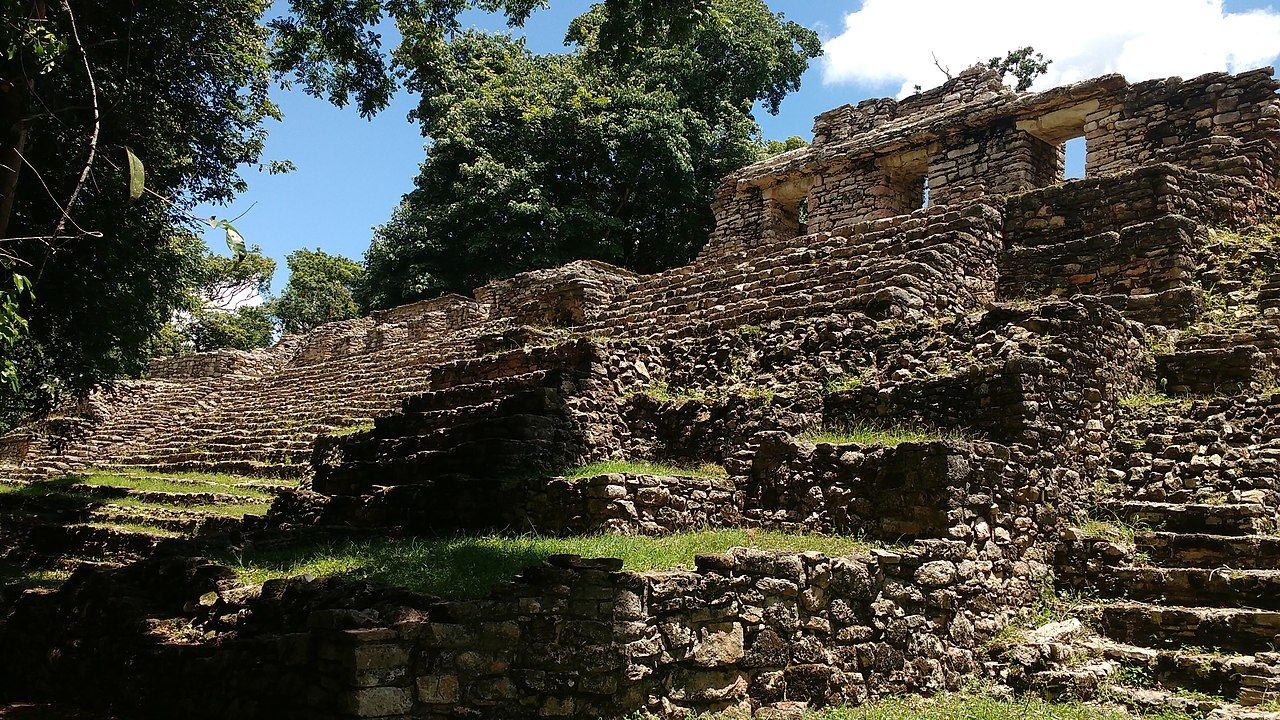
Prototype Courtesy of Wikipedia (CC BY-SA 4.0). Structure 33 at Yaxchilán
Sculpture
Many Mayan sculptures film humans, which are depicted with protruding brow bones, full lips 👄, and crossed eyes 👀 ( ⬅️ this completely contradicts European standards of beauty from previous units). The bulk of these humans are well-respected figures (gods and goddesses, historical people, etc.) and are pictured in different events to tell a story 📖 to the piece of work's viewer (narrative art). As yous tin see below, the Mayans were peculiarly fond of relief sculpture (sculpture that is yet attached to its media, rather than carved away) and used the technique nigh exclusively when making sculptures.
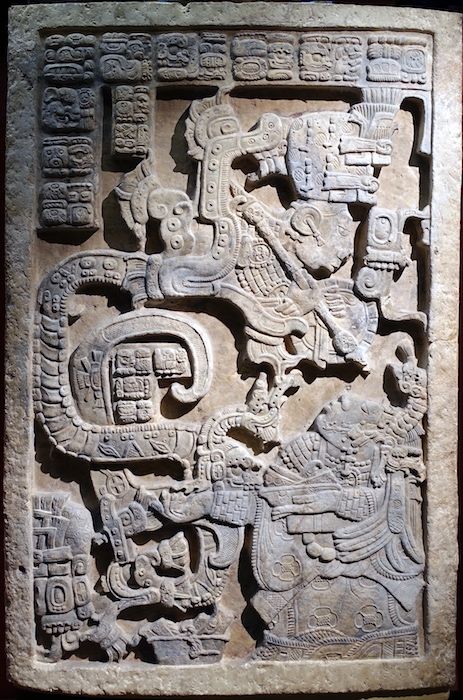
Prototype Courtesy of Khan University. Lintel 25, Structure 23
How do the dazzler standards pictured in Lintel 25, Structure 23 contradict with those nosotros've seen in units 2-4 (ex. Greece, Renaissance Italy, Roman verism, etc)?
Anasazi 🇺🇸
The Anasazi were know for their pueblos (adobe homes that are stacked onto one another), of which the Mesa Verde cliff dwellings are the most well-known example. Every bit their proper name suggests, these pueblos were built into the side of a cliff, similarly to Petra and the Bamiyan Buddhas in u[nit vii](Link to published Unit vii guide). In front of the homes 🏠 is a plaza, where their inhabitants would gathe, and, perchance, complete daily tasks together and accept religious ceremonies. Considering they were congenital beneath cliffs, the residents of the Mesa Verde cliff dwellings had to farm 🌽 and assemble h2o🚰 on the plateau above and bring information technology downwardly to their community (that's kind of inconvenient 😉 ).
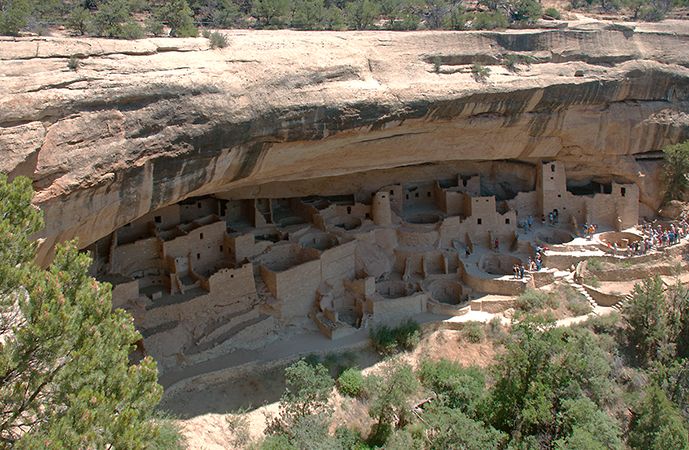
Image Courtesy of Khan Academy. Mesa Verde Cliff Dwellings
Mississippian 🇺🇸
Unlike its name suggests, the Mississippian culture didn't originate in the land of Mississippi, only instead, a large section of the midwest, southern, and eastern United states near the Mississippi River. The people of the easternmost part were Mound-Builders (people who built mounds for various reasons, including religion and ceremonies) and sometimes fabricated them into shapes. There are many theories as to what is pictured in the mound below, but the well-nigh popular theories are that it is a snake of some sort (almost probable a rattlesnake) 🐍, or a representation of Halley's Comet ☄️
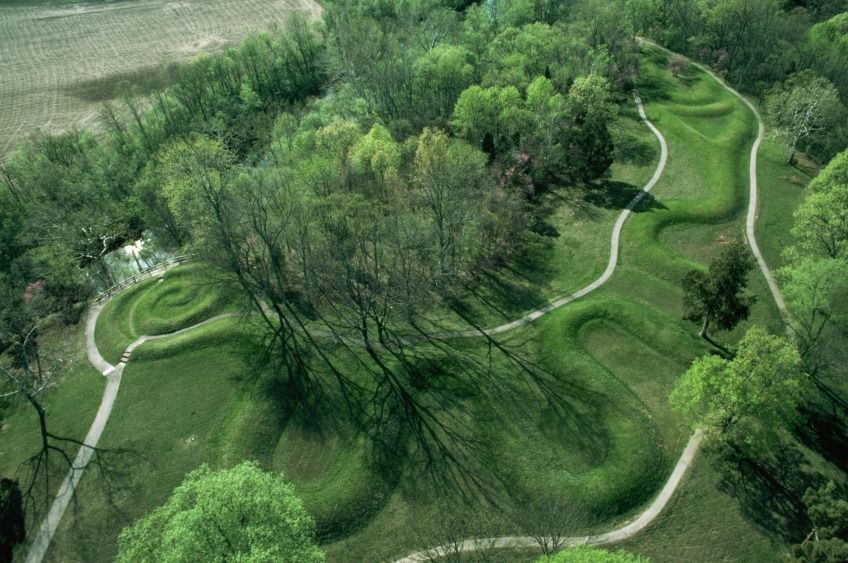
Image Courtesy of the National Library of Medici. Great Serpent Mound
Aztec 🇲🇽
The single greatest influence on Aztec artwork, both sculpture and compages, its polytheistic (more than than one god or goddess) religion. Aztec organized religion has a reputation for being aggressive and violent 😡, which is why most of the works from this civilization take to do with ceremonies such as blood-letting and routine human sacrifices. Nigh sculptures depict a mythological story that has to practise with the previously mentioned topics, and were used in those rituals. For case, the Coyolxauhqui Stone (pictured below ⬇️) depicts a man cede and was placed at the bottom of a pyramid where these sacrifices were washed.
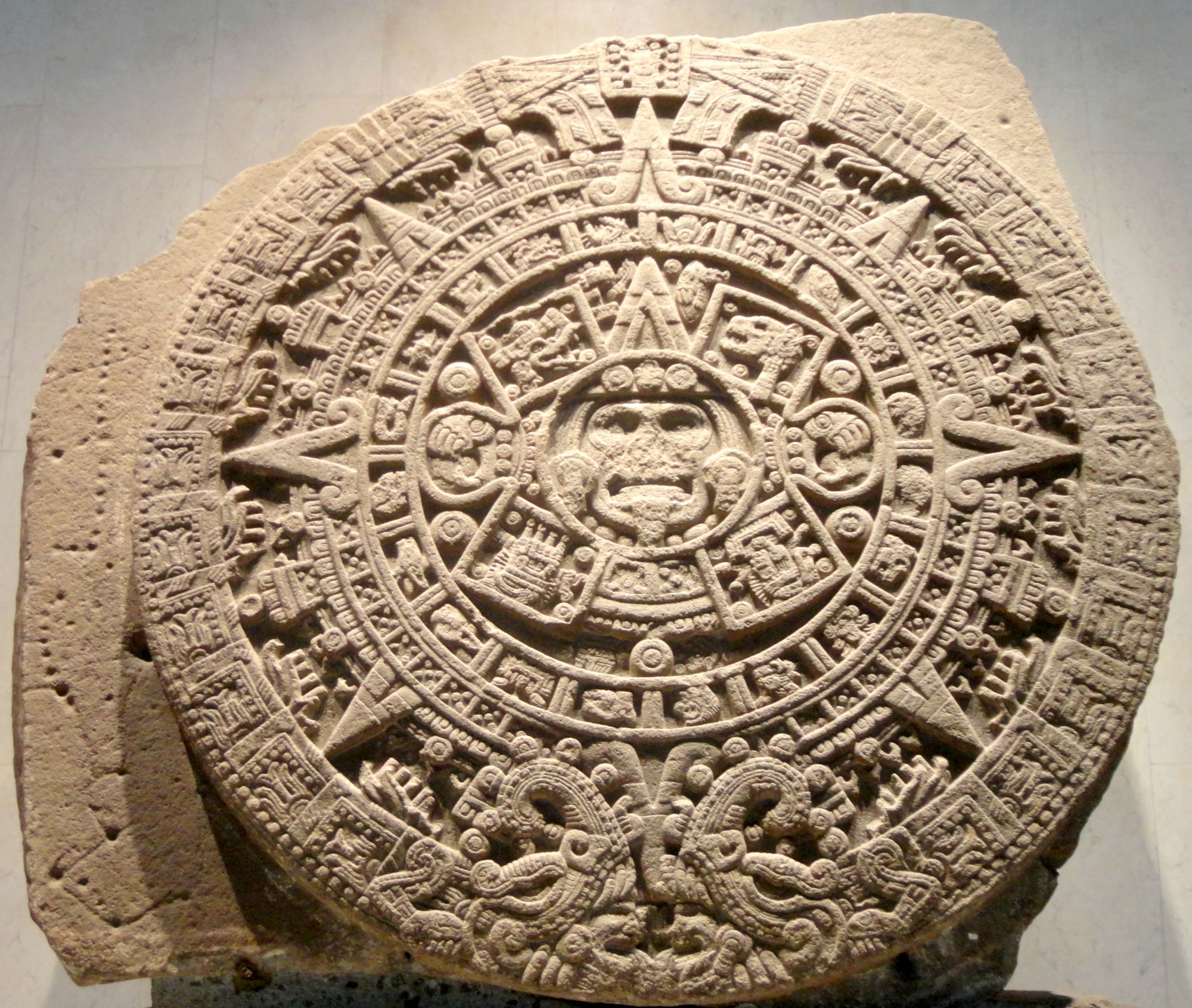
Image Courtesy of Wikipedia (CC BY-SA four.0). The Calendar Stone
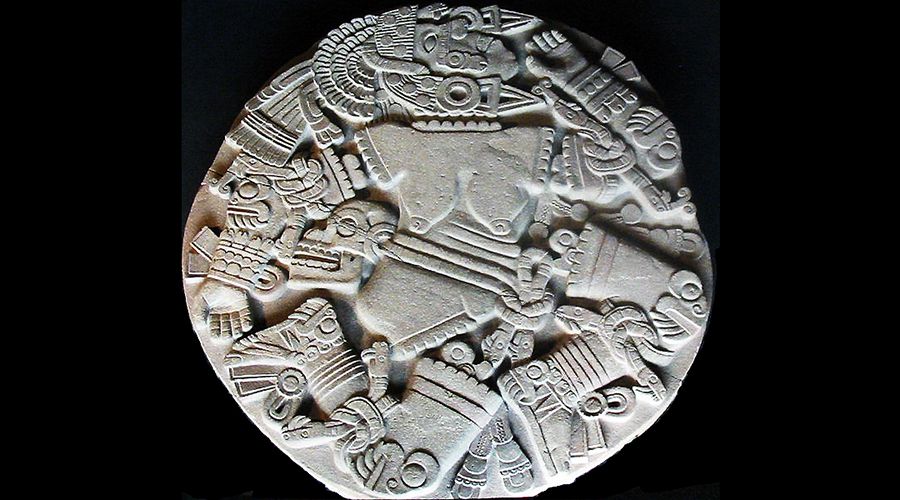
Image Courtesy of Wikipedia. The Coyolxauhqui Stone
Incan 🇵🇪 🇪🇨 🇧🇴 🇦🇷 🇨🇱 🇨🇴
The Inca built their capital city, Cusco, using the ashlar masonry technique (similarly-shaped stones continued together with mortar), which shows their architectural 🏢 skill. Usually, the edges of the rocks are slightly curved and do not 🚫 form a straight line, emphasizing the trapezoidal shape of Incan buildings. Although many of these cultures are distinct, a common theme throughout all indigenous American compages is pyramid and trapezoid-shaped buildings. Information technology isn't known whether the Inca did this for aesthetic or religious purposes like the Aztec and Maya did.
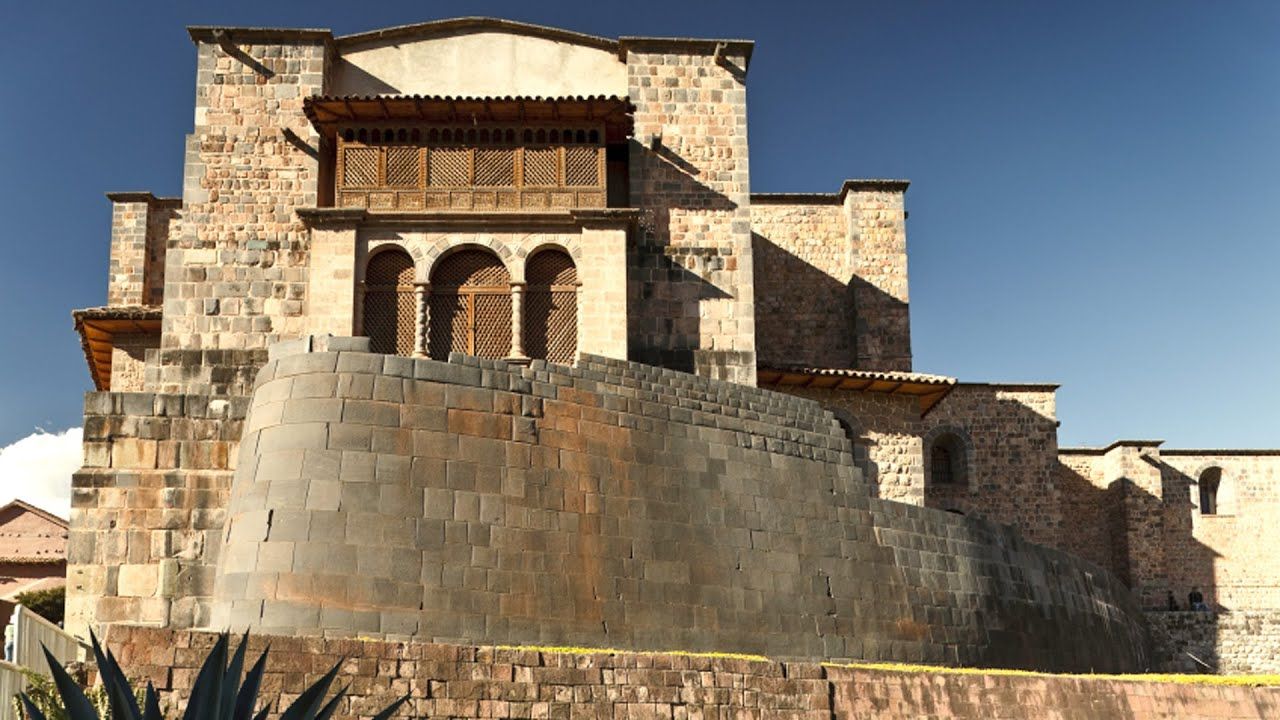
Paradigm Courtesy of Viator Travel on Youtube.
Native North America 🇺🇸 🇨🇦
The media (materials) used and appearance of Native Northward American art varies greatly past region, which include the Arctic ❄️, Pacific Northwest 🌲, Southwest 🏜️, Plains 🌾, and Eastern Woodlands 🌳. When European explorers came to these regions and introduced them to their artistic traditions, Native American artists began to utilize new European mediums such equally beads and brighter pigments 🎨 in their previously traditional artworks. Eventually, European settlers and tourists to reservations gained interest in Native American art and became the main market for selling these works, like the Black-on-Black Ceramic Vessel pictured beneath.

Image Courtesy of Khan Academy. Transformation Mask
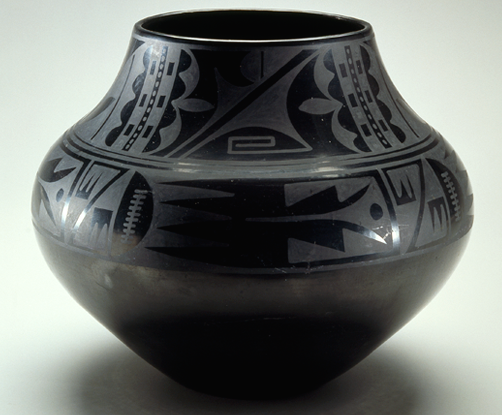
Image Courtesy of Khan University. Black-on-Blackness Ceramic Vessel
And that'southward it for unit 5! Hopefully, this review helped yous ready for your class and the AP Art History exam. Happy studying, art historians 🎨!
Summary of the works
| Art | Location | Class | Date |
| Chavín de Huántar | Chavín de Huántar District, Republic of peru | Granite | 900-200 BCE |
| Yaxchilán Lintel 25, Construction 23 | Chiapas, Mexico | Limestone | 725 CE |
| Mesa Verde Cliff Dwellings | Montezuma County, Colorado | Sandstone | 450-1300 CE |
| Bang-up Serpent Mound | Adams County, Ohio | Earthwork | c. 1070 CE |
| Templo Mayor | United mexican states Metropolis, Mexico | Stone | 1375-1520 |
| Ruler'south Feather Headdress | Mexico | Feathers and gilded | 1428-1520 |
| Maize Cobs | Cusco, Republic of peru | Canvass metal and gold and silver alloys | c. 1400-1533 |
| City of Cusco | Cusco, Republic of peru | Sandstone | c. 1440 |
| Machu Picchu | Cusco Region, Republic of peru | Granite | 1450-1540 |
| All-T'oqapu Tunic | Peru | Camelid fiber and cotton | 1450-1540 |
| Bandolier Pocketbook | Oklahoma, USA | Beads and leather | c. 1850 |
| Transformation Mask | Warning Bay, Canada | Paint, woods, and string | late 19th century |
| Painted Elk Hide (Hibernate Painting of a Sun Dance) | Wind River Reservation, Wyoming | Elk hide and pigment | c. 1890-1900 |
| Black-on-Black Ceramic Vessel | San Ildefonso Pueblo, New United mexican states | Ceramic | mid 20th century |
Source: https://library.fiveable.me/ap-art-history/unit-5/ap-art-history-unit-52-turtle-island-regions/study-guide/5sVEHpRPCE5KSt3QuD8W
0 Response to "Chavin De Huantar 900200 Bce Ap Arts Allto Qapu Tunic Ap Arts"
Postar um comentário